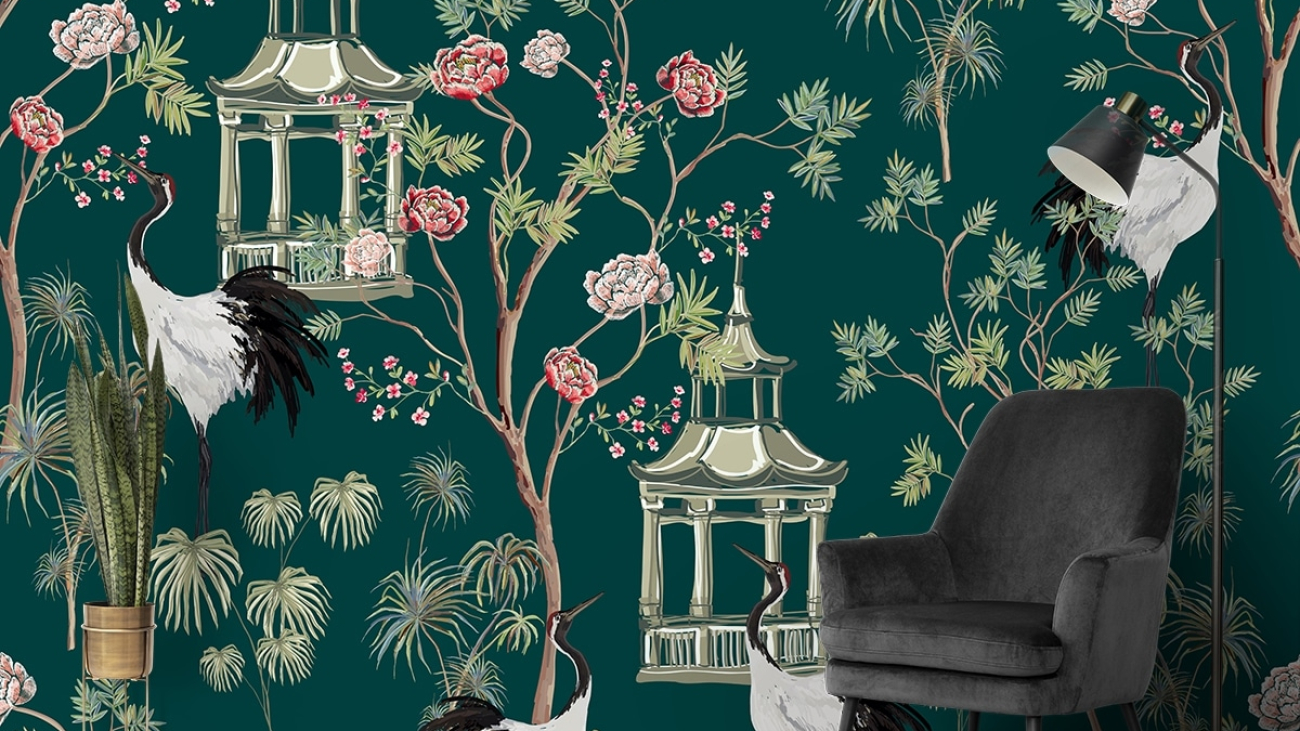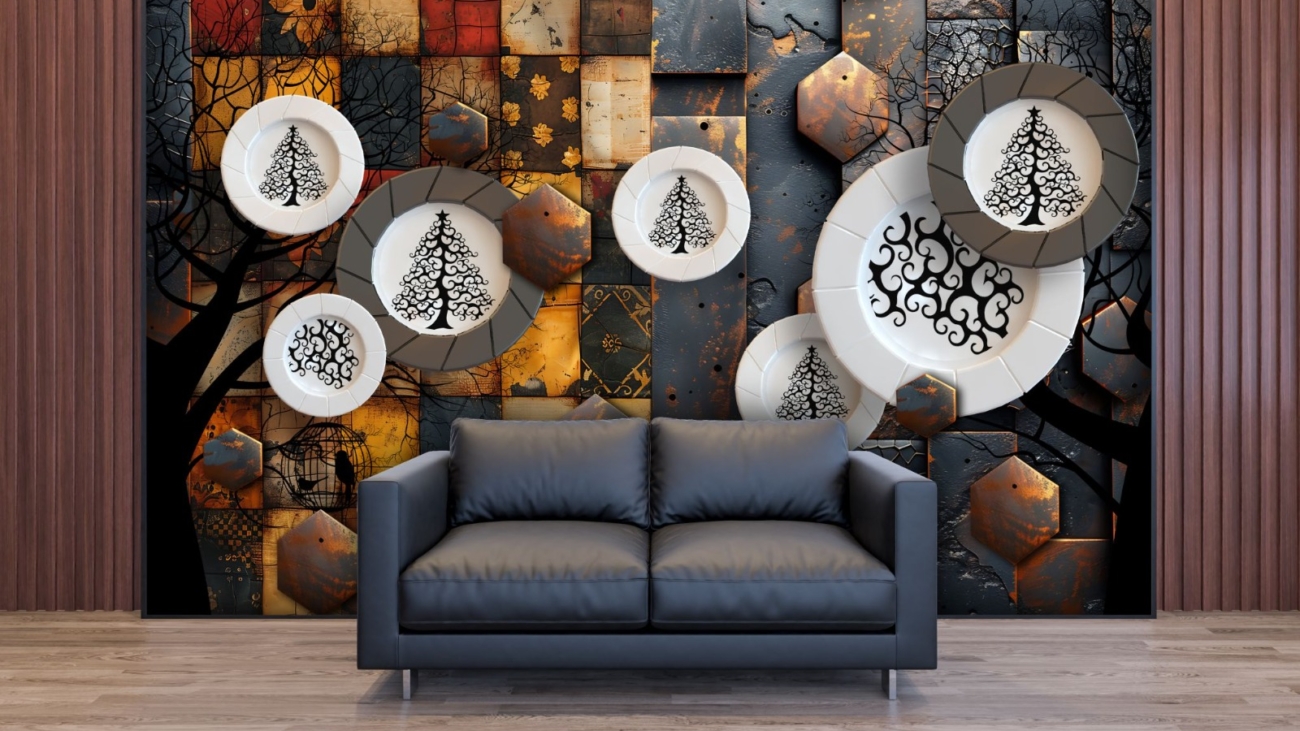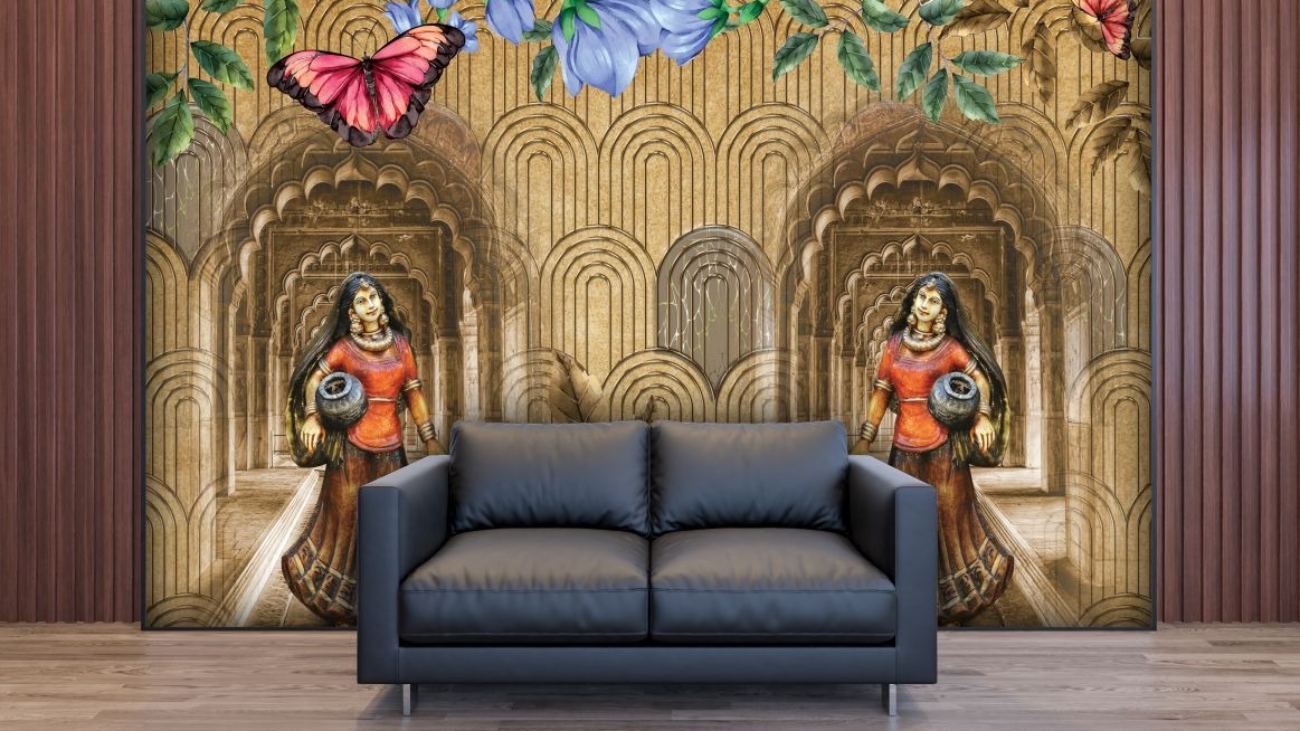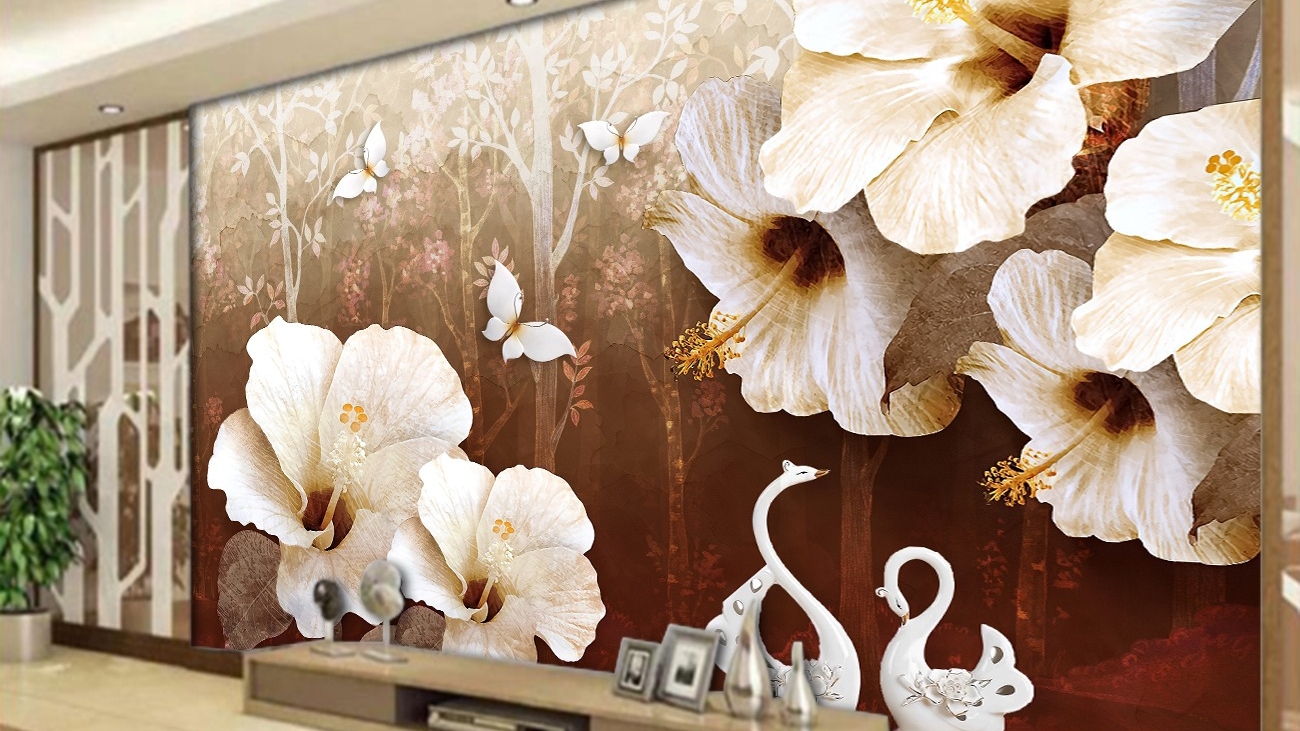Introduction
When it comes to home decor, wallpaper is a powerful tool that allows you to transform a space, adding depth, texture, color, and personality. Unlike paint, wallpaper offers a wide variety of patterns, textures, and finishes, enabling you to truly customize your interiors. Whether you’re aiming for a bold statement wall or a subtle backdrop, the options are limitless.
However, with such a vast array of designs available, choosing the perfect wallpaper can feel overwhelming. You might wonder: Which type of wallpaper is best for my living room? What patterns will make a small room look bigger? How do I match wallpaper to my furniture and decor?
In this guide, we’ll break down everything you need to know to choose the right wallpaper for every room in your home. From understanding wallpaper materials to exploring current trends and how to apply wallpaper in unique ways, this comprehensive guide will ensure your next wallpaper project is a success.
1. Understanding the Purpose of Each Room
Before diving into patterns, colors, and textures, it’s crucial to consider the purpose of the room. Each space in your home serves a unique function, and the wallpaper you choose should enhance that.
Living Room: The Heart of the Home
The living room is often the most social space in the home, a place where family and friends gather. As such, it’s important to select wallpaper that sets a welcoming tone. If your living room gets a lot of natural light, you can experiment with bold colors and large patterns, as the light will balance out the intensity of the design.
Popular Choices:
- Textured wallpaper: Adds warmth and sophistication, perfect for cozy gatherings.
- Botanical prints: Reflect a modern yet timeless design, creating a sense of connection with nature.
- Geometric patterns: If your decor leans toward modern or minimalist, geometric patterns can add a touch of contemporary elegance without overwhelming the space.
Bedroom: A Personal Retreat
Your bedroom should be a place of relaxation, offering a sanctuary from the hustle and bustle of daily life. Soft, calming tones work best here, as bold patterns can sometimes feel too stimulating for a restful environment.
Popular Choices:
- Pastel florals: Light, soft floral prints add an element of romance and tranquility.
- Textured neutrals: For a serene and minimalist look, textured wallpaper in neutral tones provides depth without being overpowering.
- Subtle metallics: Metallic finishes on wallpapers can reflect light softly, creating a luxurious, peaceful atmosphere.
Kitchen and Dining Room: Functional and Stylish
The kitchen and dining areas are often functional spaces, but that doesn’t mean you have to sacrifice style. You can use wallpaper to create a cheerful and inviting space that reflects your personality.
Popular Choices:
- Vinyl wallpaper: Easy to clean and durable, perfect for high-traffic areas and spaces prone to spills.
- Bold, bright patterns: A playful pattern in a kitchen or dining room can create a lively, welcoming atmosphere, making family meals more enjoyable.
- Fruit or culinary-themed prints: These types of wallpapers are fun and thematic, enhancing the kitchen’s overall purpose.
Bathroom: Spa-Like and Practical
Bathrooms are smaller, but that doesn’t mean they can’t benefit from a carefully chosen wallpaper. Humidity and moisture are factors to consider, so choose materials that are resistant to these elements.
Popular Choices:
- Vinyl or moisture-resistant wallpaper: These are ideal for bathrooms because they can withstand the humidity.
- Natural textures: Grasscloth or bamboo-inspired wallpapers can transform your bathroom into a spa-like retreat.
- Bold designs in small spaces: Don’t shy away from using striking patterns in smaller bathrooms; the compact space can handle a bold wallpaper without feeling overwhelming.
2. Choosing Colors That Complement Your Decor
Color is one of the most critical factors when choosing wallpaper. It sets the mood and can dramatically influence the feel of a room. When selecting wallpaper, consider the existing color palette of your furniture, flooring, and decor.
Neutral Colors: The Safe Bet
Neutral colors—like beige, gray, and off-white—are versatile and work well in most spaces. They allow you to play with textures and patterns without overpowering the room. Neutral wallpapers are especially popular in minimalist and contemporary designs.
Use Cases:
- Smaller rooms: Neutral colors can make a small room appear more spacious.
- Accent walls: If you want to highlight one wall without making the room feel too busy, a neutral-toned wallpaper with a subtle texture can create a focal point.
Bold and Bright: Making a Statement
If you’re looking to make a bold statement, vibrant colors like deep blues, emerald greens, and even rich purples can instantly draw attention to your walls. These colors work best in larger rooms or spaces with ample natural light, where they won’t feel too overwhelming.
Use Cases:
- Feature walls: Create a striking accent wall in your living room or bedroom with a bold, colorful wallpaper.
- Bright, social spaces: Kitchens and dining rooms benefit from bright, cheerful colors, adding energy to the space.
Monochrome and Minimalist: Sleek and Modern
For those who prefer a sleek, modern look, monochrome palettes are a fantastic choice. Black and white wallpaper, or varying shades of a single color, can bring sophistication and balance to a room.
Use Cases:
- Modern living rooms: Black and white patterns add contrast and drama to a contemporary design.
- Monochrome nurseries: Soft greys and muted tones are increasingly popular for gender-neutral nurseries.
Nature-Inspired Palettes: Calm and Serene
Nature-inspired colors like sage green, sky blue, and earthy browns help create a calming atmosphere. These colors work well in spaces meant for relaxation, such as bedrooms, bathrooms, and even living rooms.
Use Cases:
- Bedrooms: Soft green or blue wallpaper can create a soothing environment conducive to rest.
- Bathrooms: Earth tones paired with textured wallpaper (like bamboo or stone) can give your bathroom a spa-like feel.
3. Types of Wallpaper Materials
Choosing the right wallpaper material is just as important as selecting the design. Different materials have different properties, and knowing which to use for each space will ensure your wallpaper lasts longer and looks great.
Vinyl Wallpaper: Durable and Easy to Clean
Vinyl wallpaper is one of the most popular choices due to its durability and ease of maintenance. It’s moisture-resistant, making it an ideal choice for bathrooms, kitchens, and high-traffic areas.
Pros:
- Easy to clean with a damp cloth
- Highly durable and long-lasting
- Resistant to moisture and humidity
Cons:
- Limited in terms of texture
- May not offer the high-end look of other materials
Textured Wallpaper: Adding Depth
Textured wallpaper offers a tactile element that can add interest and depth to your walls. This type of wallpaper is often used to cover imperfections in walls or to create a more luxurious feel.
Pros:
- Adds dimension and richness to a room
- Helps hide imperfections on the wall
- Available in a variety of materials like grasscloth, bamboo, and silk
Cons:
- Can be more challenging to install
- Difficult to clean and maintain
Fabric-Backed Wallpaper: Luxurious and Elegant
Fabric-backed wallpaper, made from materials like linen or silk, offers a luxurious, high-end look. It’s a popular choice for bedrooms, dining rooms, and other spaces where a touch of elegance is desired.
Pros:
- Elegant and sophisticated appearance
- Adds a unique texture to the walls
Cons:
- Requires professional installation
- More expensive and delicate
Paper Wallpaper: Traditional and Versatile
Traditional paper wallpaper comes in a wide variety of prints and patterns. It’s less durable than vinyl but offers a classic look that works well in low-traffic areas like bedrooms and living rooms.
Pros:
- Wide variety of patterns and designs
- Eco-friendly options available
Cons:
- Not as durable as other materials
- Susceptible to wear and tear in humid areas
4. Patterns and Textures: Making a Design Statement
Once you’ve settled on the right material, it’s time to think about the design. Patterns and textures can completely change the way a room looks and feels. Whether you want to create a bold statement or a subtle backdrop, understanding how patterns work with your space is key.
Bold Patterns: Statement Walls
Bold, large-scale patterns—like florals, geometrics, or abstract designs—are ideal for creating a feature wall or focal point in your room. These designs can add drama and interest, but it’s essential to balance them with neutral colors elsewhere in the room to avoid overwhelming the space.
Best for: Feature walls in living rooms, dining rooms, and bedrooms.
Subtle Patterns: Understated Elegance
For a more subtle look, consider wallpaper with soft, delicate patterns. These designs work well in smaller rooms, as they add interest without making the space feel cluttered. Stripes, small florals, and subtle textures can add sophistication to a room without stealing the spotlight.
Best for: Bedrooms, hallways, and smaller living spaces.
Textures: Adding Depth and Dimension
Textured wallpapers—such as grasscloth, silk, or embossed patterns—add a tactile element to your walls. These are great for adding depth and dimension to a room, particularly in spaces where you want to create a sense of warmth and luxury.
Best for: Living rooms, dining rooms, and bedrooms where you want to create a high-end feel.
Conclusion
Choosing the perfect wallpaper for your home involves more than simply picking a pretty pattern. You need to consider the function of the room, the colors and textures that will complement your decor, and the durability of the wallpaper material. Whether you’re looking to create a bold statement wall or add a touch of elegance with subtle textures, this guide will help you make an informed decision that enhances your home’s overall aesthetic.
Remember, the right wallpaper can transform any room, making it feel more inviting, stylish, and unique. Browse our wide selection of wallpapers and start turning your design vision into reality today!

 Cart is empty
Cart is empty 




